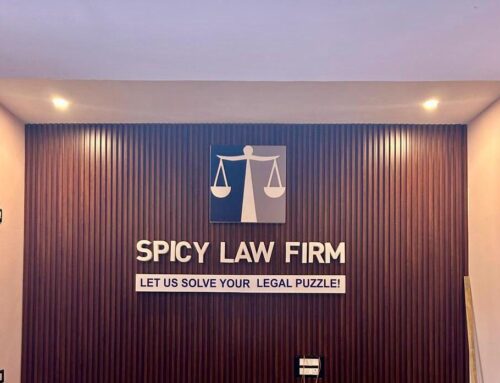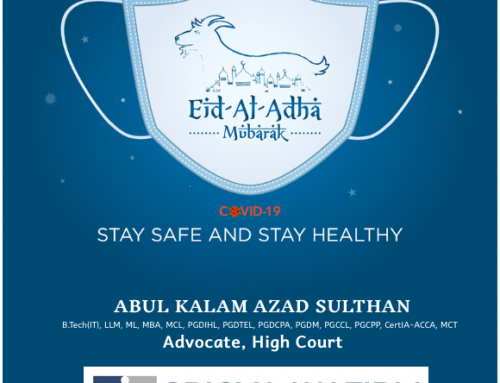– Compiled by Abul Kalam Azad Sulthan, Advocate, Madurai Bench of High Court of Judicature at Madras.
26. Indra Sawhney Vs Union of India is popularly known as
a) Judges Transfer Case
b) Illegal Detention Case
c) Mandal Commission Case
d) Constitutional Case
Answer: c
Explanation: Indira sawhney filed a case against Narasimha Rao govt order allowing 10 percent reservation for economically backward classes of higher caste in govt jobs. It was meant to pacify the anti reservation struggles born out of implementation of Mandal Commission report in 1989 by the then incumbent Janata Party. The Court made judgement that 1)Reservation is based only on socially and educationally backward classes(SEBC) not on the grounds of economic condition. So SC strike down reservation given to economically backward classes. 2)Upheld provision of creamy and non creamy layer in Backward Classes and no reservation in promotion.
27. Due to the outcome of this case slum dwellers were benefitted
a) N.K.Chandra Vs State of Haryana
b) Olga Tellis Vs Bombay Municipal Corporation
c) P.V.Narasimharao Vs Union of India
d) Ratlam Municipal Council Vs Vardichand
Answer: b
Explanation: Olga Tellis v. Bombay Municipal Corporation was decided in 1985 by the five Judges Bench of the Supreme Court of India. The Honorable bench consisted of C.J., Y.V. Chandrachud, J., A.V. Varadarajan, J., O. Chinnappa Reddy, J., S. Murtaza Fazal Ali and J., V.D. Tulzapurkar. This case came before the Supreme Court as a writ petition by persons who live on pavements and in slums in the city of Bombay. It was prayed by the petitioners to allow them to stay on the pavements against their order of eviction. The majority judgment (concurring by all the five Judges) was delivered by Honorable Chief Justice Y.V. Chandrachud.
28. What is meant by Homicide?
a) Suicide by human being not at home
b) Suicide at home
c) Killing of a human being by another human being
d) Killing of human being by animal
Anwer: c
Explanation: Homicide literally means the killing of one person by another.
29. Adulteration of food and drink is a punishable offence
a) Under Section 274-276 of IPC
b) Under Section 277-278 of IPC
c) Under Section 272-273 of IPC
d) None of the above
Answer: c
Explanation: Section 272 and 273 of Indian Penal Code reads as follows:
30. Maximum punishment for waging a war against the Government of India under IPC is
a) Rigorous imprisonment up to 5 years
b) Rigorous imprisonment up to 10 years
c) Rigorous imprisonment for life term
d) Death sentence
Answer: d
Explanation: Section 121 of the Indian Penal Code states “whoever wages war against the Government of India, or attempts to wage such war, or abets the waging of such war, shall be punished with death, or imprisonment for life, and shall also be liable to fine.”
31. Offences relating to elections are
a) Contained in the IPC as originally enacted
b) Are introduced in the IPC by the subsequent amendment
c) Are not covered by IPC
d) None of the above
Answer: b
Explanation: Chapter IXA, Section 171A to Section 171I of the Indian Penal Code 1860 dealing with offences relating to elections. This Chapter of the Indian Penal Code, 1860 was inserted in the year 1920. The Indian Election Offence and Inquiry ACT, 1920 was enacted which also brought certain amendment in Indian Penal Code as a result of which person found guilty of corrupt practice is disqualified. It was enacted with a view to Provide for the punishment of malpractices in an elections and for the conduct of inquiries in disputed Election.
32. Rupa Bajaj V/s. KPS Gill, is a famous case which the Supreme Court decided on
a) Wrongful restraint
b) Wrongful confinement
c) Outrage of modesty of a woman
d) Maintenance to the divorced women
Answer: c
Explanation:
Mrs. Rupan Deol Bajaj & Anr vs Kanwar Pal Singh Gill & Anr on 12 October, 1995
33. Which of the following is not of civil nature
a) Right to take out procession
b) Right to worship in a temple
c) Right to caste and religion
d) All of the above
Answer: c
Explanation: Section 9 of the Civil Procedure Code reads as follows:
9. Courts to try all civil suits unless barred .- The Courts shall (subject to the provisions herein contained) have jurisdiction to try all Suits of a civil nature excepting suits of which their cognizance is either expressly or impliedly barred.
Explanation I—As suit in which the right to property or to an office is contested is a suit of a civil nature, notwithstanding that such right may depend entirely on the decision of questions as to religious rites or ceremonies.
Explanation II—For the purposes of this section, it is immaterial whether or not any fees are attached to the office referred to in Explanation I or whether or not such office is attached to a particular place.
Hence the correct answer is c.
34. In a suit where the doctrine of res judicata applies
a) The suit is liable to be dismissed
b) The suit is liable to be stayed
c) Both (a) and (b)
d) None of the above
Answer: a
Explanation: According to Section 11 of Civil Procedure Code,
11. Res judicata.- No court shall try any suit or issue in which the matter directly and substantially in issue has been directly and substantially in issue in a former suit’ between the same parties, or between parties under whom they or any of them claim, litigating under the same title, in court competent to try such subsequent suit or the suit in which such issue has been subsequently raised, and has been heard and finally decided by such court.
35. Under Section 16, CPC, a suit relating to immovable property can be filed in a Court whose local jurisdiction is
a) Where the property is situated
b) Where the defendant voluntarily resides or carries on business
c) Both (a) and (b)
d) None of the above
Answer: c
Explanation: Section 16 of Civil Procedure Code reads as follows:
16. Suits to be instituted where subject matter situate.- Subject to the pecuniary or other limitations prescribed by any law, suits—
(a) for the recovery of immovable property with or without rent or profits,
(b) for the partition of immovable property,
(c) for foreclosure, sale or redemption in the case of a mortgage of or charge upon immovable property,
(d) for the determination of any other right to or interest in immovable property,
(e) for compensation for wrong to immovable property,
(f) for the recovery of movable property actually under distrait or attachment, shall be instituted in the Court within the local limits of whose jurisdiction the property is situate:
Provided that a suit to obtain relief respecting, or compensation for wrong to, immovable property held by or on behalf of the defendant, may, where the relief sought can be entirely obtained through his personal obedience, be instituted either in the Court within the local limits of whose jurisdiction the property is situate, or in the court within the local limits of whose jurisdiction the defendant actually and voluntarily resides, or carries on business, or personally works for gain.
36. Pleading means
a) Plaint and Written Statement
b) Plaint only
c) Written Statement
d) Oral statement by the pleader
Answer: a
Explanation: Order VI Rule 1 says “Pleading shall mean plaint or written statement.”
37. On failure to file a written statement, under Order VIII Rule 10 of CPC the court may
a) Pass any order
b) Order for striking off the decree
c) May pronounce the judgment at once
d) Any of the above
Answer: d
Explanation: Order VIII Rule 10 of CPC reads as follows:
10. Procedure when party falls to present written statement called for by Court.- Where any party from whom a written statement is required under rule 1 or rule 9 fails to present the same within the time permitted or fixed by the Court, as the case may be, the Court shall pronounce judgment against him, or make such order is relating to the suit as it thinks fit and on the pronouncement of such judgment a decree shall be drawn up.
38. Which Section of Specific Relief Act prohibits filing a case against the Government
a) Section 5
b) Section 6
c) Section 7
d) Section 8
Answer: b
Explanation: Section 6 (2) of the Specific Relief Act reads as follows:
(2) No suit under this section shall be brought—
39. The Patent Act became a law in
a) 1970
b) 1975
c) 1996
d) 1966
Answer: a
Explanation: The Patents Act 1970, along with the Patents Rules 1972, came into force on 20th April 1972, replacing the Indian Patents and Designs Act 1911.
40. A Public Interest Litigation can be filed under
a) Article 226 of Constitution and Article 32 of Constitution
b) U/s 133 of Criminal Procedure Code
c) (a) and (b)
d) None of the above
Answer: c
Explanation: Any of these courts can be approached for filing the petition in the interests of the public or for public welfare: Supreme Court under Art.32 of the Constitution of India; High Court under Art.226 of the Constitution of India; and The Court of Magistrate under Sec.133 of Cr. P.C.
41. Supreme Court in S.P.Gupta V/s. Union of India AIR 1982, SC 149, decided
a) Free legal aid
b) Bonded Labours
c) Judges Transfer
d) Illegal detention
Answer: c
Explanation: In this case, S P Gupta challenged the arbitrary transfer of HC judge by president. The HC judge is transferred by President after consultation with CJI,CJ of HC but this consultation is not binding on president so S P Gupta challenged this arbitrariness.
42. Supreme Court in a PIL known as Kamal Nath case evolved
a) Basic Future and Basic Structure doctrine
b) Public Trust Doctrine
c) Separation of Powers doctrine
d) Public Interest Doctrine
Answer: b
Explanation: The public trust doctrine, as discussed by the Court in this judgment was a part of the law of the land. M. C. Mehta v. Kamal Nath was a landmark case in Indian environmental law. In the case, the Supreme Court of India held that the public trust doctrine applied in India.
43. Vishakha V/s. State of Rajasthan case is related to
a) Sexual Harassment at workplace
b) Protection of civil rights
c) Uniform Civil Code
d) None of the above
Answer: a
Explanation: Vishakha and others v State of Rajasthan was a 1997 Indian Supreme Court case where Vishakha and other women groups filed Public Interest Litigation (PIL) against State of Rajasthanand Union of India to enforce the fundamental rights of working women under Articles 14, 19 and 21 of the Constitution of India.
44. Court’s power to award compensation is provided in Specific Relief Act
a) Under Section 20
b) Under Section 21
c) (a) and (b)
d) None of the above
Answer: b
Explanation: Section 21 of Specific Relief Act, 1963 reads as follows:
21. Power to award compensation in certain cases.—
45. Proving of hand writing is provided in Indian Evidence Act
a) By the opinion of Experts
b) By the evidence of a person who is acquainted with the handwriting
c) After police verification
d) (a) and (b)
Answer: d
Explanation: Section 72 of the Evidence Act states that, when the court has to form an opinion as to the person by whom any document was written or signed, the opinion of any person acquainted with the handwriting of the person by whom it is supposed to be written or signed, that is was or was not written or signed by that person is admissible. Section 45 of the Indian Evidence Act reads as follows:
45. Opinions of experts.—When the Court has to form an opinion upon a point of foreign law or of science or art, or as to identity of handwriting [or finger impressions], the opinions upon that point of persons specially skilled in such foreign law, science or art, [or in questions as to identity of handwriting] [or finger impressions] are relevant facts. Such persons are called experts.
46. Section 26 of Indian Evidence Act provides
a) No confession made by a person in police is admissable
b) Confession made by a person in police custody is admissable
c) Confession made in the immediate presence of a magistrate is admissable
d) (a) and (c)
Answer: d
Explanation: Section 26 of Indian Evidence Act reads as follows:
26. Confession by accused while in custody of police not to be proved against him.- No confession made by any person whilst the is in the custody of a police officer, unless it be made in the immediate presence of a Magistrate, shall be proved as against such person.
47. The term ‘Evidence’ means and includes
a) Oral Evidence
b) Documentary Evidence
c) Electronic records produced for the inspection of Court
d) All of the above
Answer: d
Explanation: The term “evidence” means and includes —
(i) Oral evidence — i.e., all statements which the Court permits or requires to be made before it by witnesses, in relation to matters of fact under inquiry; and
(ii) Documentary evidence — i.e., all documents, including electronic records, produced for the inspection of the Court.
48. Which is the authority that determines the language of the Court other than High Court within a given State, under Section 272 of Cr.PC
a) State Government
b) Central Government
c) Supreme Court of India
d) (a) and (b)
Answer: a
Explanation: Section 272 of Cr.PC reads as follows:
The State Government may determine what shall be, for purposes of this Code, the language of each Court within the State other than the High Court.
49. A decree can be
a) Final
b) Preliminary
c) Only preliminary not final
d) Either preliminary or final
Answer: d
Explanation: It is apparent prima facie that interim orders cannot be treated as a preliminary decree because the stages in which they arise though cannot be segregated. A preliminary decree on the other hand is a decree wherein the substantive legal rights have been determined by the court but the final determination is yet to come. Such a decree will be called a preliminary decree and when final calculations are done, it becomes a final decree. To construe a difference between a preliminary decree and a ‘final’ or ordinary decree under section 2(2) of the Code of Civil Procedure, 1908, it is to be kept in mind that final decree deals with fact finding while the preliminary decree deals with the determination of substantive rights.
50. Foreign Judgment is defined in CPC
a) Under Section 2(6) of the CPC
b) Under Section 2(7) of the CPC
c) Under Section 2(8) of the CPC
d) None of the above
Answer: a
Explanation: A foreign judgment is defined under section 2 (6) of the CPC as a judgment of a foreign court. A foreign court, under section 2(5) of CPC, means a court situated outside India and not established or continued by the authority of the Central Government.







Leave A Comment